 Author
Author

REXSAC is short for Resource Extraction and Sustainable Arctic Communities and it is a Nordic Centre of Excellence in Arctic research. Funded by Nordforsk and led by our Division together with Stockholm University and Stockholm Environment Institute.
Together with 12 additional partners in the Nordic countries, REXSAC studies extractive resource industries in the Arctic as cultural, social, economic, and ecological phenomena – from analysis of why resource extraction commences, to what consequences it has for communities in the Arctic and beyond, and what opportunities exist for transitioning toward post-extractive futures.
Within the project there is also a blog written by the researchers! Be sure to visit it for updates, articles and facts: blog – REXSAC
Like this:
Like Loading...
 Author
Author
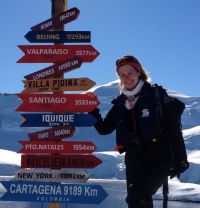 Hanne Nielsen, from the University of Tasmania (Institute for Marine and Antarctic Studies), is currently visiting our Division on a four-month Scientific Committee on Antarctic Research (SCAR) fellowship.
Hanne Nielsen, from the University of Tasmania (Institute for Marine and Antarctic Studies), is currently visiting our Division on a four-month Scientific Committee on Antarctic Research (SCAR) fellowship.
Whilst in Sweden, Hanne is working on a project entitled “Framing Antarctica as Fragile: Tracing the evolution of media narratives about the far south (1945 – 2015).” This project complements her recent PhD work at the University of Tasmania (between English and IMAS), where Hanne examined representations of Antarctica in advertising media (“Selling the land of extremes“).
The aim of the SCAR Fellowship programme is to encourage the active involvement of early career researchers in Antarctic projects, and to strengthen international capacity and cooperation in Antarctic research. 56 SCAR Fellowships have been awarded since the programme’s inception, but this is the first time a SCAR Fellowship has been awarded to a researcher from the Humanities and Social Sciences (HASS). Hanne notes that KTH is an internationally renowned hub for Antarctic humanities and social sciences work, making it the ideal location to undertake such a project. She is looking forward to forging closer connections between researchers in Scandinavia and in Australia/New Zealand.
Hanne is the current President of the Association of Polar Early Career Scientists (APECS), and the early career representative on the SCAR Humanities and Social Sciences Expert Group (HASSEG) Executive Committee. She will be visiting KTH until mid July 2018.
Like this:
Like Loading...
 Author
Author
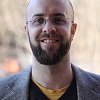
Linus Salö [Version in English appears below]
För språket eller för kunskapen – varför sammanfatta forskning på svenska?
Universitet är betydelsefulla på flera olika vis, och den kunskap de producerar har många olika publiker. Det är en central utgångspunkt för projektet Making Universities Matter, som jag är en del av. Själv är jag är sociolingvist. För mig är det en lika central utgångpunkt att olika publiker nås med olika språk och genrer. Det är temat för detta blogginlägg.
Det här blogginlägget handlar om en vetenskaplig studie. Du läser texten på svenska; direkt under finns samma text fast på engelska. Ingen av texterna liknar dock den engelskspråkiga tidskriftsartikel där den vetenskapliga studien publicerades.
Det finns gott om skäl att kommunicera forskning på flera språk, och gott om skäl att omforma forskningstexter så att de når nya läsare. Som forskare vid ett svenskt lärosäte har jag ett slags dubbelt ansvar: dels att sprida mina forskningsresultat i samhället, dels att bidra till att upprätthålla svenskan inom mitt fackområde. Eller är det verkligen jag som har det ansvaret? Vad spelar det egentligen för roll om min forskning mest publiceras på engelska? Och hur kan egentligen svenska universitet och högskolor arbeta för att påverka och reglera forskares språkanvändning? Precis dessa frågor står också i centrum för den tidskriftsartikel som inlägget handlar om.
Såväl i Sverige som globalt är det ett etablerat faktum att engelskan blir allt vanligare som vetenskapligt publiceringsspråk. Den utvecklingen har flertalet fördelar, samtidigt som den också för med sig vissa typer av problem. Ett problem som brukar lyftas fram handlar om kunskapsöverföring från vetenskapen till samhället i stort. Enligt högskolelagen ska högskolorna ägna sig åt forskning och undervisning, men de ska också ”samverka med det omgivande samhället och informera om sin verksamhet samt verka för att forskningsresultat tillkomna vid högskolan kommer till nytta.” Kan man samverka med det svenska samhället om all forskning skrivs på engelska?
Ett annat problem rör utvecklingen av den offentliga och fackspecifika svenskan. Enligt språklagen är svenska Sveriges huvudspråk, även om också andra språk får användas för olika funktioner i samhället. Det är till exempel fritt fram för svenska universitet och högskolor att använda engelska i forskning och undervisning. Men eftersom de oftast formellt är myndigheter har de också språkliga ansvar. Exempelvis ska de enligt språklagen verka “för att svensk terminologi inom deras olika fackområden finns tillgänglig, används och utvecklas.” Hur utvecklar man vetenskapssvenskan om all forskning skrivs på engelska?
Det är tydligt att svenska universitet och högskolor står inför ett dilemma. Å ena sidan finns flera goda skäl att använda engelska som ett sätt att nå ut med kunskapen vid den internationella forskningsfronten. Å andra sidan kan den ensidiga användningen av engelska göra det svårt att nå ut med kunskapen i det omgivande samhället, som i Sverige är flerspråkigt om än dominerat av svenska. Dessutom måste svenskan användas för att utvecklas, och den måste utvecklas för alls kunna användas framgent.
Ett sätt att få bukt med denna problematik är att kräva sammanfattningar på svenska i forskningstexter som skrivs på engelska (och andra språk). I Sverige är det framför allt doktorsavhandlingar som blivit föremål för detta krav. Denna utveckling har påhejats av språkvetare, som brukar framhålla flera förtjänster med svenskspråkiga sammanfattningar: dels bidrar de till att överbrygga kunskapsgapet mellan vetenskap och allmänhet, dels bidrar de till att det svenska språket får utveckla fackspecifika termer, uttryckssätt och register. Svenskspråkiga sammanfattningar brukar därmed lyftas fram som ett botemedel för de problem som engelskans dominans inom vetenskapen kan föra med sig. Men frågan är om en och samma text verkligen kan lösa alla problem i ett slag. Låt oss föreställa oss en doktorsavhandling i astropartikelfysik, som mot slutet av doktorandtiden ska förses med en fyra sidor lång sammanfattning på svenska. Hur borde den skrivas? En avhandlingssammanfattning som är populär nog för att allmänheten ska förstå den kommer knappast bidra till att utveckla disciplinens språkliga register. Och omvänt: en sammanfattning som gör anspråk på att introducera nya svenska termer och uttryckssätt, ja den kommer troligen bli svårtillgänglig för de flesta icke-specialister. Svenskspråkiga sammanfattningar kan alltså bidra till antingen ett kunskapsöverföringsmål eller ett språkutvecklingsmål – men man måste välja, för målen är inbördes oförenliga. Oförenligheten till trots är båda målen goda.
I dagsläget kräver 15 av Sveriges cirka 50 lärosäten att avhandlingar på andra språk än svenska får en svenskspråkig sammanfattning. Den som närläser lärosätenas krav på svenskspråkiga sammanfattningar inser snart att olika lärosäten har olika idéer om vad sammanfattningarna ska fylla för syfte. Medan vissa lärosäten kräver populärvetenskapliga sammanfattningar som ett sätt att nå ut brett med avhandlingarnas innehåll, efterfrågar andra lärosäten fylliga sammanfattningar där terminologin ges svenskspråkig form. Denna oklarhet kring sammanfattningens syfte återspeglas ofta i forskarnas inställning till svenskspråkiga sammanfattningar, där många ser dem som ett påtvingat och alltför tidsödande dekret. Sammanfattningarna skrivs ofta i all hast, utan tanke på vare sig kunskapsöverföring eller språkutveckling. I andra fall kan inte doktorskandidaten tillräckligt med svenska för att kunna skriva sammanfattningen – vilket innebär att det i slutändan är handledaren eller någon annan som skriver den.
Det är alltså tydligt att målet med svenskspråkiga policyer drivits igenom utan någon klar bild av vilken funktion sammanfattningarna ska fylla. Tydligt är också att sammanfattningspolicyn lider av olika typer av implementeringsproblem. Ingen av dessa observationer bör dock tas som intäkt för att sammanfattningarna saknar värde: de produceras uppenbarligen i en stigande grad, och vi vet ännu väldigt lite om vilka effekter det får för kunskapsöverföring och språkutveckling i framtiden. För tillfället är funktionen om inte annat symbolisk, eftersom den påminner om vetenskapens mångfaldiga syften och publiker.
Artikeln “Universities, their responsibilities, and the matter of language” finns fritt tillgänglig på min Academia-sida, där du också finner andra texter på likande teman.
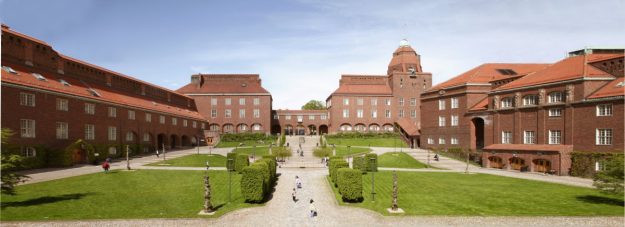
For language or for knowledge – why summarize research in Swedish?
Universities matter in many ways, and the knowledge they produce has multiple publics. This is a central point of departure in the project platform Making Universities Matter, of which I am a member. As for myself, I am a sociolinguist. Accordingly, an equally central point of departure for me is that different publics are reached by means of different languages and genres. That is in effect the theme of this blogpost.
This blogpost is about a scientific study. You are reading the text in English; above is the same text but in Swedish. Yet, none of the two texts look like the English-language journal article where the scientific study was published.
There are ample reasons to communicate research in multiple languages, and ample reasons to reshape research texts so as to reach out to new readers. In fact, as a researcher at a Swedish university, I have a kind of dual responsibility: firstly, to disseminate my research findings in society at large; secondly, to contribute to the maintenance of the Swedish language within my area of expertise. Or do these responsibilities really rest upon me? Why does it really matter that my research is published for the most part in English? And how can Swedish universities go about regulating the language use of researchers? Precisely such questions are central to the journal article that this blogpost deals with.
In Sweden as well as globally, it is becoming increasingly evident that English dominates as the language of scientific publication. While this development has several virtues, it also brings with it a number of issues. One issue that is commonly pointed out pertains to knowledge transfer from science to wider society. According to the Swedish Higher Education Act, Swedish universities are tasked to provide education and produce research, but the mandate also includes ‘third stream activities and the provision of information about their activities, as well as ensuring that benefit is derived from their research findings.’ Is societal interaction feasible if all research is conducted in English?
Another issue pertains to the development of the public and field-specific Swedish language. According to the Language Act, Swedish is the so-called principal language in Sweden, although other languages may be used for various ends in society. For example, Swedish universities are free to use English in research and education. However, since universities are standardly government agencies, they also have linguistic responsibilities. According to the Language Act, they have ‘a special responsibility for ensuring that Swedish terminology in their various areas of expertise is accessible, and that it is used and developed.’ How is scientific Swedish developed if all research is written in English?
It is clear that Swedish universities face a dilemma. On the one hand, there are many good reasons to use English as a means to disseminate knowledge to the international research frontline. On the other hand, the sole use of English might impede on the objectives to disseminate knowledge to the surrounding society, which in Sweden is multilingual albeit dominated by the Swedish language. Besides, the Swedish language needs be used in order to develop, and it must keep developing in order to stay usable.
One way of dealing with these dynamics is to demand Swedish-language summaries (henceforth SLSs) in research texts written in English (and other languages). In Sweden, it is first and foremost doctoral theses that have been subjected to this demand. This development has been cheered by linguists who typically see several benefits with SLSs: firstly, SLSs contribute to bridging the knowledge gap between science and the public; secondly, they contribute to expanding the Swedish language with field-specific terms, expressions, and registers. Thus, SLSs tend to be foregrounded as a remedy for the potential issues caused by the dominance of English in science. However, the question is whether one single text is really capable of solving all issues at once. Take the case of a doctoral thesis in astroparticle physics, which at the end of the project is to be supplemented with a four-page long SLS. How is it to be written? An SLS that is simple enough for the general public to grasp is unlikely to contribute to the linguistic registers of the discipline. And vice versa, an SLS which takes seriously the task of introducing new terminology and expressions is likely to be incomprehensive to non-specialists. In other words, SLSs may contribute either to a knowledge bridging goal or a language development goal, but one needs to choose because the goals are mutually incompatible. Incompatibility notwithstanding, both goals are legitimate.
To date, 15 out of Sweden’s 50 universities demand that theses in other languages than Swedish are supplemented with SLSs. However, a close reading of such policy demands reveals that different universities have different ideas about the purpose that SLSs are intended to fulfil. While some universities demand SLSs as a means to reach out broadly with the content of the theses, other universities request extensive SLSs where core terminology is given Swedish-language equivalents. This ambiguity surrounding the purpose of the SLSs is also reflected in researchers’ attitudes to SLSs. They are often written in a rush, without much focus either on knowledge transfer nor language development. In other cases, the candidate does not have sufficient skills in Swedish to be able to write up the SLS, which at the end of the day means that the supervisor or someone else writes it up.
It is clear that the SLS policies have been promoted without a clear idea about the function they are intended to serve. It is also clear that the policies suffer from various forms of implementation issues. Yet, none of these observations entail that SLSs lack value altogether – evidently, they are increasingly produced, and little is known about the effects this fact might have in the future. At the moment, the function of the SLS is at the very least symbolic, as it reminds us of the multiple objectives and publics of science.
The study “Universities, their responsibilities, and the matter of language” is freely available through my Academia page, where you can also find other texts on similar topics.
Like this:
Like Loading...
 Author
Author
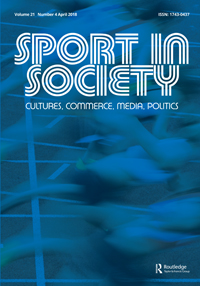 (2018). The ‘physiologization’ of skiing: the lab as an obligatory passage point for elite athletes?. Sport in Society. Ahead of Print.
(2018). The ‘physiologization’ of skiing: the lab as an obligatory passage point for elite athletes?. Sport in Society. Ahead of Print.
Slow on updates in the blog doesn’t mean slow on updates on the rest of the Internet! Doctor Daniel Svensson who defended at the Division in the end of 2016 and our Professor Sverker Sörlin recently got this article published: The ‘physiologization’ of skiing: the lab as an obligatory passage point for elite athletes?: Sport in Society: Vol 0, No 0
Abstract
In The Pasteurization of France, Bruno Latour argued that the rise of hygiene was dependent on collaboration between Pasteur, the hygiene movement, scientists and others. He also pointed at the importance of obligatory passage points such as the Pasteurian laboratory, to ensure the scientization and rationalization of hygiene. This article argues that there has been a similar process in elite sports, a ‘physiologization’ where scientists, sport organizations and specialized coaches have transformed training from a deeply personal and experiential matter to something universal and scientific. Physiologists made the test lab an obligatory passage point for athletes who wanted to compete on the highest level. Through theories of sportification and science and technology studies this paper analyses the scientization of endurance sports.
Like this:
Like Loading...
 Author
Author
In other words, the flux of living thoughts is the ongoing signifying ecology that is life.
This review is written by Daniele Valisena
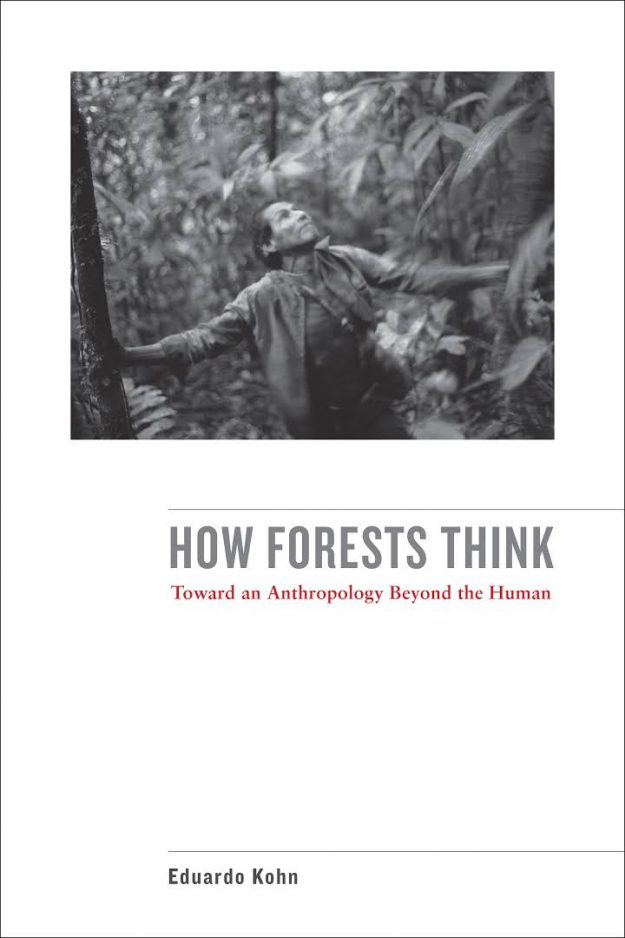 Do dogs dream? What do those dreams tell about us? Why should it matter to us? And who is “us”? Those are but some of the questions that Eduardo Koch learnt to address from the Runa Puma people in Avila, on East Ecuador Amazonia. “How Forests Think” is a book about finding back the common ground; a common ground which is both material and spiritual, human and animal; a common ground that belongs to the ones who are still alive as well as to the ones who are now dead. The book, which is the result of the many years spent by the South American anthropologist together with the Runa people, can be ascribed as an environmental humanities work, though the author does not state it. Nonetheless, in the introduction the author writes that one of his goals is “neither to do away with the human nor to re-inscribe it, but to open it”. What does he mean with opening “the human”? And how does that relate with dogs’ dreams? The point he wants to stress is that both humans and dogs are in a relationship, as all the living beings do. To criticize the Cartesian divide and the human exceptionalism which spurs from it means to change western scholars point of view and to start seeing as a runa puma – a were-jaguar – which is both human and non-human, dead and alive, corporeal and transcorporeal. All Living beings are signs – according to Koch, which gets this from the American philosopher Charles Pierce, the founder of semiotics –, which means that they are all ongoing relational process of signification. From this ontologically egalitarian standpoint, Koch elaborates a phenomenology of life that is built upon the infinite relationships and encounters that unite human with all other living beings. Those are all selves in that they interpret and react to any socio-environmental interaction they participate to and co-produce. The co-production of signifying relations of which Koch talks about can be framed as well as an ecological network that is the result of the bodily and affective trajectories of all the living beings. Those trajectories are in Ingoldian terms the “waypoints” of the semiotic process that is life.
Do dogs dream? What do those dreams tell about us? Why should it matter to us? And who is “us”? Those are but some of the questions that Eduardo Koch learnt to address from the Runa Puma people in Avila, on East Ecuador Amazonia. “How Forests Think” is a book about finding back the common ground; a common ground which is both material and spiritual, human and animal; a common ground that belongs to the ones who are still alive as well as to the ones who are now dead. The book, which is the result of the many years spent by the South American anthropologist together with the Runa people, can be ascribed as an environmental humanities work, though the author does not state it. Nonetheless, in the introduction the author writes that one of his goals is “neither to do away with the human nor to re-inscribe it, but to open it”. What does he mean with opening “the human”? And how does that relate with dogs’ dreams? The point he wants to stress is that both humans and dogs are in a relationship, as all the living beings do. To criticize the Cartesian divide and the human exceptionalism which spurs from it means to change western scholars point of view and to start seeing as a runa puma – a were-jaguar – which is both human and non-human, dead and alive, corporeal and transcorporeal. All Living beings are signs – according to Koch, which gets this from the American philosopher Charles Pierce, the founder of semiotics –, which means that they are all ongoing relational process of signification. From this ontologically egalitarian standpoint, Koch elaborates a phenomenology of life that is built upon the infinite relationships and encounters that unite human with all other living beings. Those are all selves in that they interpret and react to any socio-environmental interaction they participate to and co-produce. The co-production of signifying relations of which Koch talks about can be framed as well as an ecological network that is the result of the bodily and affective trajectories of all the living beings. Those trajectories are in Ingoldian terms the “waypoints” of the semiotic process that is life.
Although the manuscript is the result of a “human and more-than-human ethnography”, and thus easier to approach for anthropologists, the book’s theoretical grounding is heavily informed by Charles Pierce philosophy and semiotic theory. Some readers might find this semiotic structure a bit heavy, especially since it is mostly enunciated in the first chapter. But with some patience the reader will find her reward in the next five chapters.
For Runas, dogs’ dreams can be interpreted and dogs partake the same spirit that inhabits humans. Hence dogs’ dreams matter to Runa Puma and to all humans because, differently from language driven epistemology, those dreams are part of the relational signification process that is life. Life is then the ensemble of all the threads of living beings and their thoughts. In other words, the flux of living thoughts is the ongoing signifying ecology that is life. Very much alike Donna Haraway’s “being together with”, the “ecology of selves” that Koch illustrates offers to environmental humanities scholar an ethnographical account and some theoretical tools to investigate more-than-human ecologies and their disruption, and to walk together in the common living ground of the anthropocene. Quoting the author, “being alive – being in the flow of life – involves aligning ourselves with an ever-increasing array of emerging habits. But being alive is more than being in habit [… and it can also be] a product of disruption and shock”. In relation to the anthropocenic totality which annihilates responsibility and magnify in geological term humanity, the ecology of selves that Koch interpret and give voice to can hence offer a different form of enchantment, which opens to more responsible and partaken ways of inhabiting life.
Like this:
Like Loading...



 Hanne Nielsen, from the
Hanne Nielsen, from the  Lokala initiativ kommer knappast att räcka för att klara vår del av Parisavtalets mål om högst två graders uppvärmning orsakad av människan. Det n saknas en stark global makthavare. Ett stort ansvar faller därigenom på den nationella nivån.
Lokala initiativ kommer knappast att räcka för att klara vår del av Parisavtalets mål om högst två graders uppvärmning orsakad av människan. Det n saknas en stark global makthavare. Ett stort ansvar faller därigenom på den nationella nivån. Ecological concepts and their acronyms can obstruct understanding of complexity by providing seemingly simple and certain descriptions of the natural world. Their use requires a balanced approach.
Ecological concepts and their acronyms can obstruct understanding of complexity by providing seemingly simple and certain descriptions of the natural world. Their use requires a balanced approach.

 (2018). The ‘physiologization’ of skiing: the lab as an obligatory passage point for elite athletes?. Sport in Society. Ahead of Print.
(2018). The ‘physiologization’ of skiing: the lab as an obligatory passage point for elite athletes?. Sport in Society. Ahead of Print. Do dogs dream? What do those dreams tell about us? Why should it matter to us? And who is “us”? Those are but some of the questions that Eduardo Koch learnt to address from the Runa Puma people in Avila, on East Ecuador Amazonia. “How Forests Think” is a book about finding back the common ground; a common ground which is both material and spiritual, human and animal; a common ground that belongs to the ones who are still alive as well as to the ones who are now dead. The book, which is the result of the many years spent by the South American anthropologist together with the Runa people, can be ascribed as an environmental humanities work, though the author does not state it. Nonetheless, in the introduction the author writes that one of his goals is “neither to do away with the human nor to re-inscribe it, but to open it”. What does he mean with opening “the human”? And how does that relate with dogs’ dreams? The point he wants to stress is that both humans and dogs are in a relationship, as all the living beings do. To criticize the Cartesian divide and the human exceptionalism which spurs from it means to change western scholars point of view and to start seeing as a runa puma – a were-jaguar – which is both human and non-human, dead and alive, corporeal and transcorporeal. All Living beings are signs – according to Koch, which gets this from the American philosopher Charles Pierce, the founder of semiotics –, which means that they are all ongoing relational process of signification. From this ontologically egalitarian standpoint, Koch elaborates a phenomenology of life that is built upon the infinite relationships and encounters that unite human with all other living beings. Those are all selves in that they interpret and react to any socio-environmental interaction they participate to and co-produce. The co-production of signifying relations of which Koch talks about can be framed as well as an ecological network that is the result of the bodily and affective trajectories of all the living beings. Those trajectories are in Ingoldian terms the “waypoints” of the semiotic process that is life.
Do dogs dream? What do those dreams tell about us? Why should it matter to us? And who is “us”? Those are but some of the questions that Eduardo Koch learnt to address from the Runa Puma people in Avila, on East Ecuador Amazonia. “How Forests Think” is a book about finding back the common ground; a common ground which is both material and spiritual, human and animal; a common ground that belongs to the ones who are still alive as well as to the ones who are now dead. The book, which is the result of the many years spent by the South American anthropologist together with the Runa people, can be ascribed as an environmental humanities work, though the author does not state it. Nonetheless, in the introduction the author writes that one of his goals is “neither to do away with the human nor to re-inscribe it, but to open it”. What does he mean with opening “the human”? And how does that relate with dogs’ dreams? The point he wants to stress is that both humans and dogs are in a relationship, as all the living beings do. To criticize the Cartesian divide and the human exceptionalism which spurs from it means to change western scholars point of view and to start seeing as a runa puma – a were-jaguar – which is both human and non-human, dead and alive, corporeal and transcorporeal. All Living beings are signs – according to Koch, which gets this from the American philosopher Charles Pierce, the founder of semiotics –, which means that they are all ongoing relational process of signification. From this ontologically egalitarian standpoint, Koch elaborates a phenomenology of life that is built upon the infinite relationships and encounters that unite human with all other living beings. Those are all selves in that they interpret and react to any socio-environmental interaction they participate to and co-produce. The co-production of signifying relations of which Koch talks about can be framed as well as an ecological network that is the result of the bodily and affective trajectories of all the living beings. Those trajectories are in Ingoldian terms the “waypoints” of the semiotic process that is life.